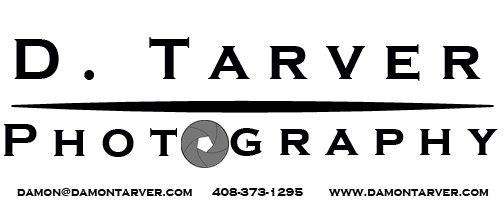
As I mentioned earlier, shooting around the lowest aperture possible helps with backgrounds as well. Lower apertures can really blur out a background making the subject of the picture really stand out. Shooting at higher apertures can cause the background to remain in focus and be distracting to the viewer.

 In the above diagram, we see a photographer, and subjects at different distances from the photographer and the background. At a suitable low aperture, Object A is in a relatively good spot. Object A is relatively close to the photographer, and relatively far from the background. Here is the typical result of this scenario.
In the above diagram, we see a photographer, and subjects at different distances from the photographer and the background. At a suitable low aperture, Object A is in a relatively good spot. Object A is relatively close to the photographer, and relatively far from the background. Here is the typical result of this scenario.
 Though there is a lot going on in the background, because it is so far from the subject, the low aperture has blurred it out and it is not very distracting.
Though there is a lot going on in the background, because it is so far from the subject, the low aperture has blurred it out and it is not very distracting.
In the diagram, the photographer is a lot further away from Object B. Object B is also a lot closer to the background. When this happens, even a low aperture can not save you from a background in focus, and a distracting picture. Here is an example. This shot was taken at f/2.8, but the background is still in focus.
 The receiver was across the field, so about 50 to 60 yards away from the photographer, but only about 10 yards in front of the players on the far sideline. There is nothing you can do in this scenario, other than possibly re-positioning yourself.
The receiver was across the field, so about 50 to 60 yards away from the photographer, but only about 10 yards in front of the players on the far sideline. There is nothing you can do in this scenario, other than possibly re-positioning yourself.
So, to re-cap; after taking the direction of the action, and the position of the sun into account, you now want to try and pick a spot that gives you the cleanest backgrounds possible. Shooting at a low aperture, and a clean background give the sports subject the isolation and full attention of the viewer.



 Now, position C (back lit) can be one of the most challenging lighting situations to deal with outdoors. Shooting back lit can wreak havoc on exposure, and if not dealt with properly, the results can be less than desirable. Here is a typical example of what the camera likes to do when shooting back lit.
Now, position C (back lit) can be one of the most challenging lighting situations to deal with outdoors. Shooting back lit can wreak havoc on exposure, and if not dealt with properly, the results can be less than desirable. Here is a typical example of what the camera likes to do when shooting back lit. As you can see, the subject is very underexposed. When you shoot with the correct subject exposure, you tend to get something a little more like this.
As you can see, the subject is very underexposed. When you shoot with the correct subject exposure, you tend to get something a little more like this.
 As the team you are shooting is attacking to the right, positioning yourself in the corner or end will assure you the maximum amount of faces towards the camera and the most action. Shooting from the end, down the Field, also has the added benefit of reducing undesirable backgrounds.
As the team you are shooting is attacking to the right, positioning yourself in the corner or end will assure you the maximum amount of faces towards the camera and the most action. Shooting from the end, down the Field, also has the added benefit of reducing undesirable backgrounds.
